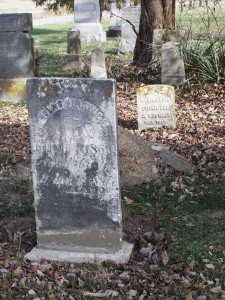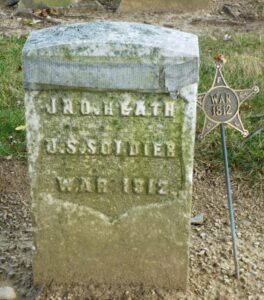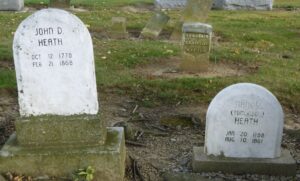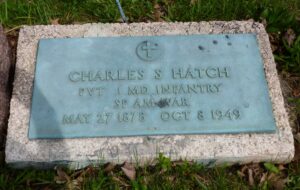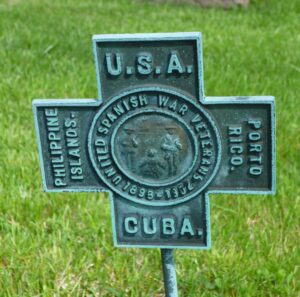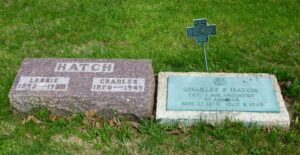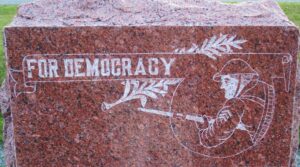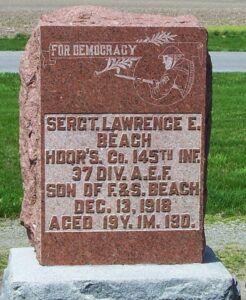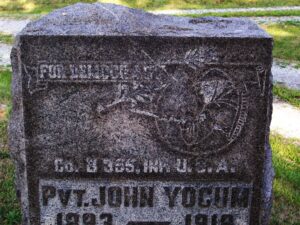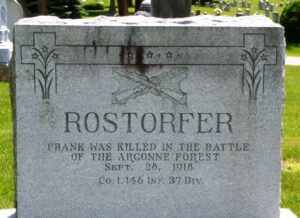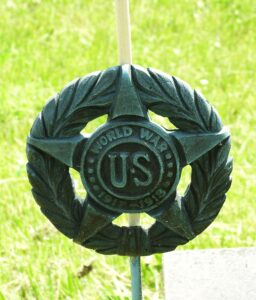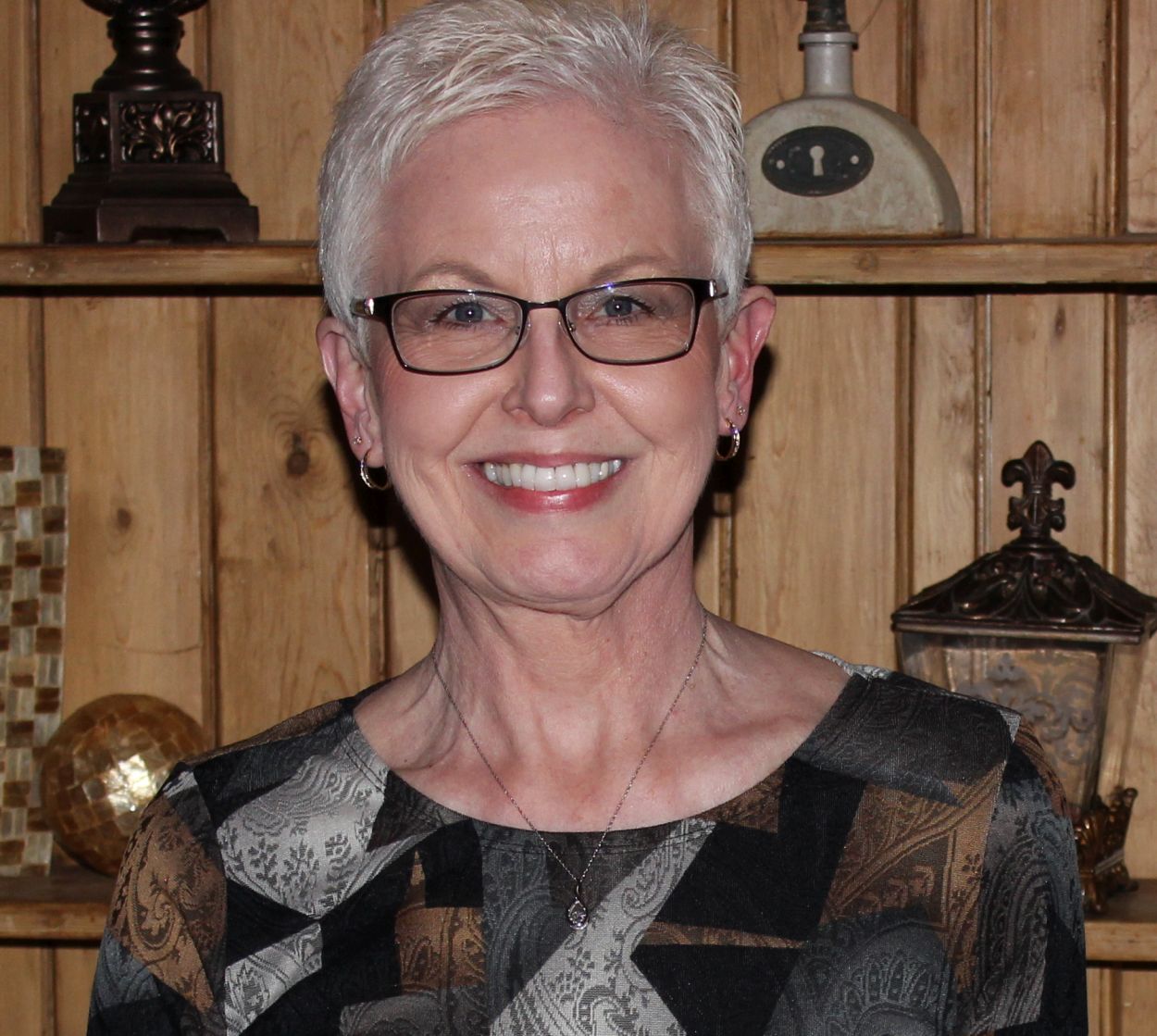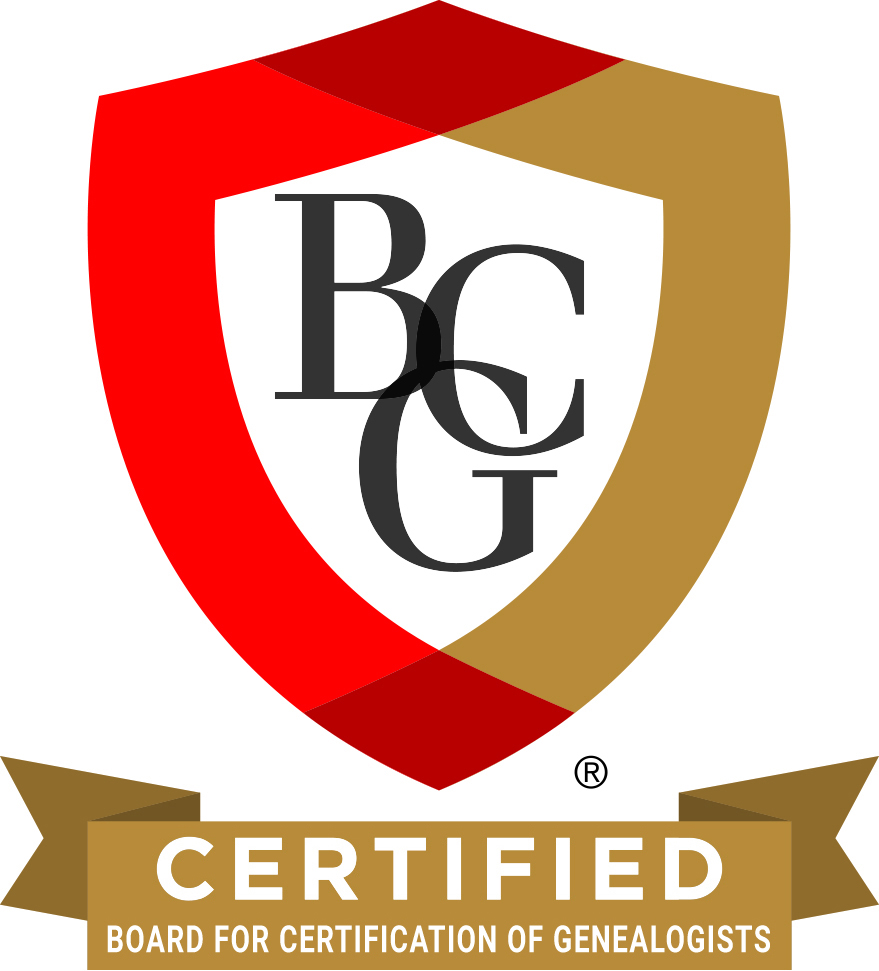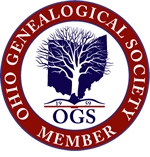The first religious society in Blackcreek Township, Mercer County, Ohio, was a Methodist Episcopal class at the Duckcreek school house. The class was formed by Rev. Joshua Smith in about 1856 and among its first members were A.M. Counterman & wife, Alonzo Cross & wife, George Clark & wife, and William Harper & wife.
Services were conducted in the Duckcreek schoolhouse until it became too small for the congregation. The schoolhouse was located a couple miles north of Chatt, on the west side of route 49, a little south of the cemetery. About 1868 a frame church was built across the road and about a quarter mile north of the school and was the first church in the township. Land for the church was purchased from Josiah H. Wilmore in 1873 for $12.50. A cemetery had already been started at the location, on a hill above Duckcreek Ditch. The oldest stone in the cemetery is that of Johnathan Emery, son of John and Sarah Emery, who died 18 August 1841.
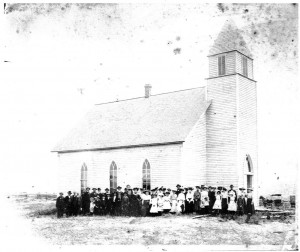
Duckcreek Church, Blackcreek Township, Mercer County, Ohio, undated photo.
In 1859 Duckcreek Church/Duckcreek Society was in the Celina Circuit and conference members were George Clark, J. Koons, D. Foreman, A.M. Counterman, S. Hopkins, D. Tinkham, A. Foreman, J. Garwood, John Detterer, W. Foreman, I. Foreman, C. Counterman, M.A. Clark, N.A. Counterman, and M.S. Tinkham.
In 1867 Duckcreek Church was on the Shanesville Circuit and officers were Elmer Hill, collector, Porter Davis, George Clark, James Nelson, M.H. Porter, John Frank, D. Clark, Christiania Johnson, Mary Clark, and Alex Counterman.
In 1869 Duckcreek was put on the Willshire circuit. Members reporting to conference were C.Y. Hill, collector, Christiania Johnson, Mary Clark, G. Clark, J. Johnson, P. Counterman, Priscilla Wood, John Frank, L. Tinkham, R. Coppersmith, and S. Hollinger.
In 1878, because of much dissatisfaction, Duckcreek left the radical United Brethren circuit and joined the Shanesville Circuit of Methodist churches. This circuit was made up of Shanesville, Fountain Chapel, Mercer and Coss, and Willshire and Duckcreek as a Willshire Circuit.
Church officers in 1879 were John Davis, Moses Foreman, D. Smith, M. Detro, H. Mille, William Beall, J. Wechter, Reed Hopkins, Baldwin Clark, and Alex Counterman. Alex and Ann Elizabeth (Bolenbaugh) Counterman were among the list of older members.
In 1882 Pastor M.M. Figley reported that smallpox that spring was very detrimental to the work.
According to the 1891 conference notes Duckcreek Church was out of debt.
In 1903 church officers were G. Marbaugh, William Tinkham, J. Davis, A. Bailey, S. Tinkham, trustees; William Tinkham and Eva Morrison, stewards; and Emanuel Stetler, class leader.
WPA records indicate that the last Duckcreek pastor was Rev. B.W. George. These records describe the church as a small wooden frame building of English design, with a tower bell, stained glass windows, but no inscriptions. The WPA records indicate that there were 16 members when the church was completed and dedicated and that no church records could be found.
Late in the evening of 28 March 1920, just after dark, the church was completely blown apart by a cyclone while a meeting was being held. It had been a clear sunny day with a stiff wind but there was no indication of a coming storm. For some reason not many people were in attendance at that evening’s service and no one was seriously injured. The cyclone completely destroyed the church building and church bell came straight down and was taken and installed in the Mount Hope Church, Adams County, Indiana, four miles to the west. The storm also knocked over and broke some cemetery stones.
That storm, accompanied by lightning, hail, and a great deal of rain, crossed portions of northwest and southeast Mercer County and swept across several states. Mercer County had no storm-related deaths but all surrounding counties had fatalities, that totaled at least 25 victims.
Duckcreek Church was never rebuilt and many of its members joined the Chattanooga Methodist Church after their church was destroyed.
A few Duckcreek Church records did survive. Next week I will post some of those records.
Sources:
History of Van Wert and Mercer Counties, Ohio, Sutton, 1882, p.418.
U.S. Work Projects Administration [WPA], Ohio Historical Records Survey, Duckcreek Church, Mercer County, Ohio; Hayes Presidential Library, Fremont, Ohio.
Information from Florence Gause, April 2005.
“Swept by Tornado,” The Rockford Press, Rockford, Ohio, 2 April 1920, p.1.

